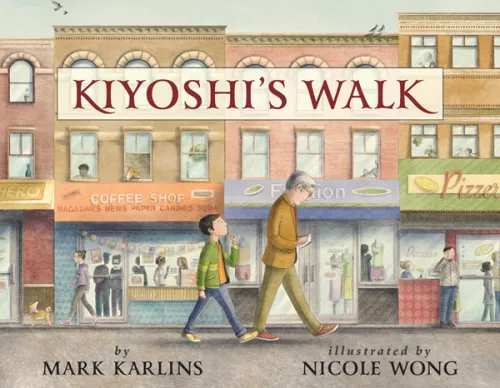Share this book
On his walk with his grandfather, Kiyoshi learns that poetry is very personal as it comes from how someone interprets their own experiences. Ask students to think about what they see when they walk through their own neighborhoods: What’s important, fun, or interesting about where they live? Who are the people who live there? How do they interact with the things and people around them?
Take students on a walk outdoors, through your school’s neighborhood if possible, to have students write, draw, or photograph what they see. When you return from your walk, ask students to write a poem about something they saw, felt, or heard on their walk. Students can write haiku or use a poetic form that works best for how they interpret their subject. Have students use drawings or photos to illustrate their poems. Display their work as a poetry walk in the school hallway or laminate copies of their poems and set up an outdoor poetry walk through your neighborhood.
Questions for Discussion or Reflective Writing
- “Where do poems come from?” is the first question Kiyoshi asks his Grandfather Eto. How would you have answered Kiyoshi’s question?
- Eto takes Kiyoshi for a walk rather than just answering Kiyoshi’s question. Why do you think Eto does this? How does Kiyoshi get an answer to his question? Do you agree with the answer Kiyoshi gets to his question? Why or why not?
- Eto and Kiyoshi are walking together. What do they observe on their walk? Do you think that they see things differently or the same? Why?
- Eto quickly turns his observations into haiku. Do you think that is easy or difficult for him to do? Why? When you observe something that interests or excites you, what do you do to remember or share it?
Related Resources
- Writing Poetry in the Classroom: A Lesson with Author Mark Karlins from Lee & Low
- Teacher's Guide for Kiyoshi’s Walk from Lee & Low
- Can You Haiku? from EDSITEment
More Titles to Try
Stay on top of current education news



